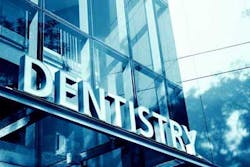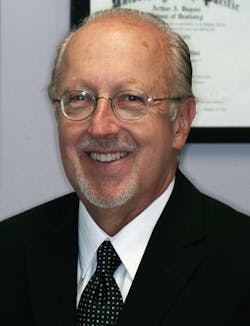Why Providing Comprehensive Care for Your
Patients Keeps Your Practice Relevant
by Leon Roisman, DMD
Multi-specialty practices are on the rise. Greater convenience, more comprehensive care, and a better patient experience are growing priorities … and increasingly, dental professionals are answering the call. However, beginning a multi-specialty practice takes a great deal of strategy and planning. The trend has recently grown to encompass various areas of health care, and the dental industry is no exception. After launching one of Southern California’s first multi-specialty dental facilities more than 30 years ago, I have learned what works and what doesn’t. Having worked in the dental industry for over 40 years, I have come to understand what makes a multi-specialty dental facility successful from both the patient’s and the dentist’s perspective. First, it is important to understand why a multi-specialty dental facility is beneficial to the patient. Of course, there is the obvious advantage of convenience. Giving patients the ability to have all of their dental needs met in one location eliminates the need to commute to various offices to have specialized treatment. For example, in one simple visit to a multi-specialty dental facility, patients can not only have X-rays and their teeth cleaned, but they can also consult with a cosmetic dentist, an oral surgeon, a periodontist, and an endodontist. Normally, receiving such comprehensive care would require multiple appointments at multiple locations. Having the specialists together during a consultation allows for a more thorough and strategic diagnosis, rather than “piece mealing” a treatment plan together.Furthermore, patients seeking dental care for their entire family also have an advantage. Instead of finding one dentist for pediatric care, one for orthodontics, etc., a family can visit a multi-specialty dental office that can accommodate the whole family. This is an attribute that can save patients substantial time that would have otherwise been spent on the phone making appointments, transferring records, and commuting between doctors. Plus, by having an in-house team of specialists, patients will have a dental office that can grow with them and is able to accommodate their changing needs. All of these patient advantages also benefit the doctors, who acquire and develop lasting relationships with their patients by offering them virtually every dental procedure in one place.Next, there is the advantage of having a team of specialized dental professionals who can work together to exceed a patient’s dental or aesthetic goals. A dental office that places its focus in only one area is at a significant disadvantage. A patient seeking cosmetic dentistry in one place, endodontic therapy in another, periodontal treatment elsewhere, and orthodontics in yet another, may likely receive disjointed results. On the other hand, specialized dentists who work in unison can deliver a much more cohesive result for the patient. As for the dentists involved, they also stand to benefit from this relationship, as they now have a built-in network of referral patients. Let’s say a patient within the multi-specialty office makes an appointment for a general cleaning, and while having that done, expresses dissatisfaction with the color or shape of his or her teeth. That patient can be immediately referred to an in-house cosmetic dentist, who can then discuss the patient’s options for whiter teeth or for veneers and crowns. If that patient also needs periodontal treatment or a dental implant as a result of the desired cosmetic treatment, the periodontist and oral surgeon are right there to offer their professional assistance. It is also important to address a potential challenge within the multi-specialty dental facility. Skeptics might say that because of the manner in which a multi-specialty practice is designed, dentists are not referring patients based upon the expertise of the dentist, but only because they are part of the same practice. While this may be a valid concern, it is the responsibility of the doctor(s) running the practice to build a team of dentists that they have full confidence in and whose abilities are top-tier. Another potential challenge of the multi-specialty practice is the actual size of the facility. Many patients are used to going to a solo dental office. New patients can feel overwhelmed by the size of a multi-specialty practice. It is up to the entire team to welcome each patient and educate him or her about the advantages of the multi-specialty practice. Explaining that each specialist has two or three operatories and is not responsible for the entire practice usually makes patients understand and more comfortable.While the many advantages of building a multi-specialty practice may be inherent, it is up to the team running the practice to make sure all of the pieces are operating in harmony. At my Southern California facility, Dental Plus Dental Group, I have a group of hand-picked specialists that I trust and feel very confident about. These are the doctors I would want my patients referred to, whether they were part of my team or not. It is immensely important to believe in the team you are creating, and I trust these doctors with my family and friends. Keep in mind that it is not only the dentists that are crucial to the success of a multi-specialty practice, but also the hygienists and office staff. The overall patient experience begins the moment the patient enters the door. Patients want to know that they are being listened to, that the dentists and entire staff are respectful of the patients’ needs and desires, and that their concerns are being addressed. Communication is the key to the success of not just a multi-specialty practice, but any practice. However, with the multi-specialty practice, communication emanates from the cohesive nature of several specialized dentists working together. With the increasing number of technological advancements and the dental industry evolving at a monumental pace, it is important for dentists to ensure their practices are up-to-date and up to patients’ expectations. In this new age, patients demand immediacy and convenience, better results, and faster and more accessible communications. It has been my experience that each one of these demands can be met — and more — with the proper management of a multi-specialty dental facility.Leon D. Roisman DMD., has been in practice for over 35 years. Dr. Roisman attended the University of Pennsylvania School of Dental Medicine, where he earned his DMD degree in 1967. From 1967-1968, he taught clinical radiology and was director of clinical radiology, with a title of associate professor, at UCLA Dental School of Dentistry. In 1972, Dr. Roisman started his practice in Pasadena, Calif. Dr. Roisman relocated and expanded his practice in 1991, and it is now known as Dental Plus+ Dental Group, a multi-specialty practice. Four years later, a new, larger facility was opened offering all dental specialties, including orthodontics, oral surgery, periodontics, endodontics, prosthodontics, and pediatric dentistry. The practic has approximately 18 doctors and 50 support staff, 24 operatories, and two outpatient surgery suites.







